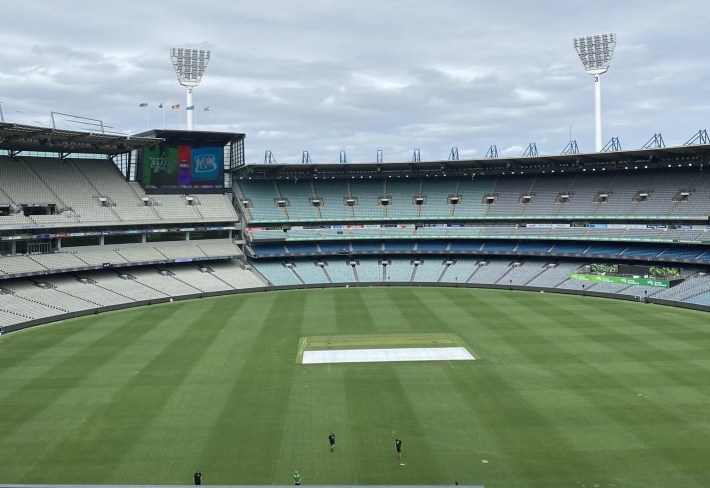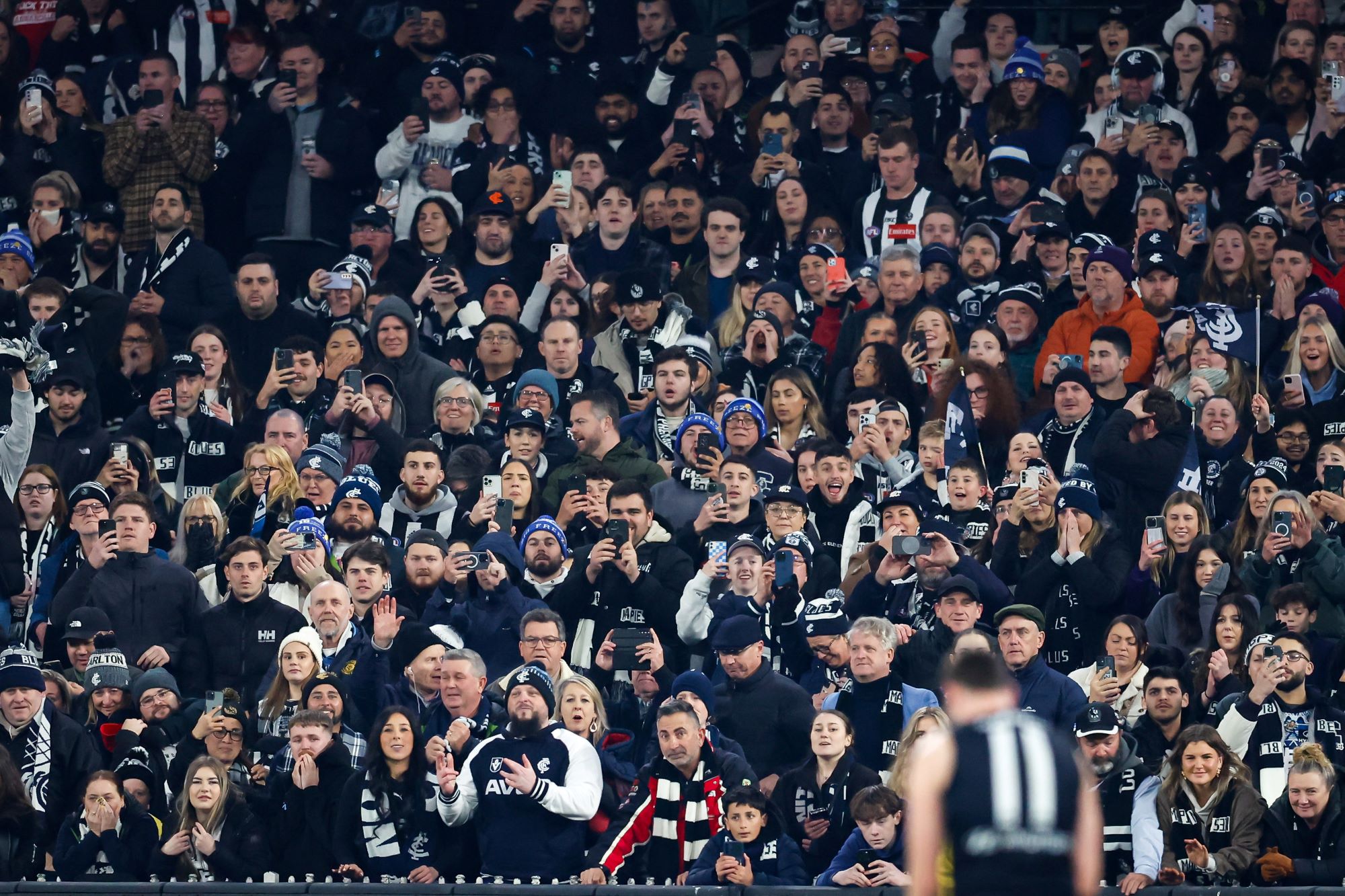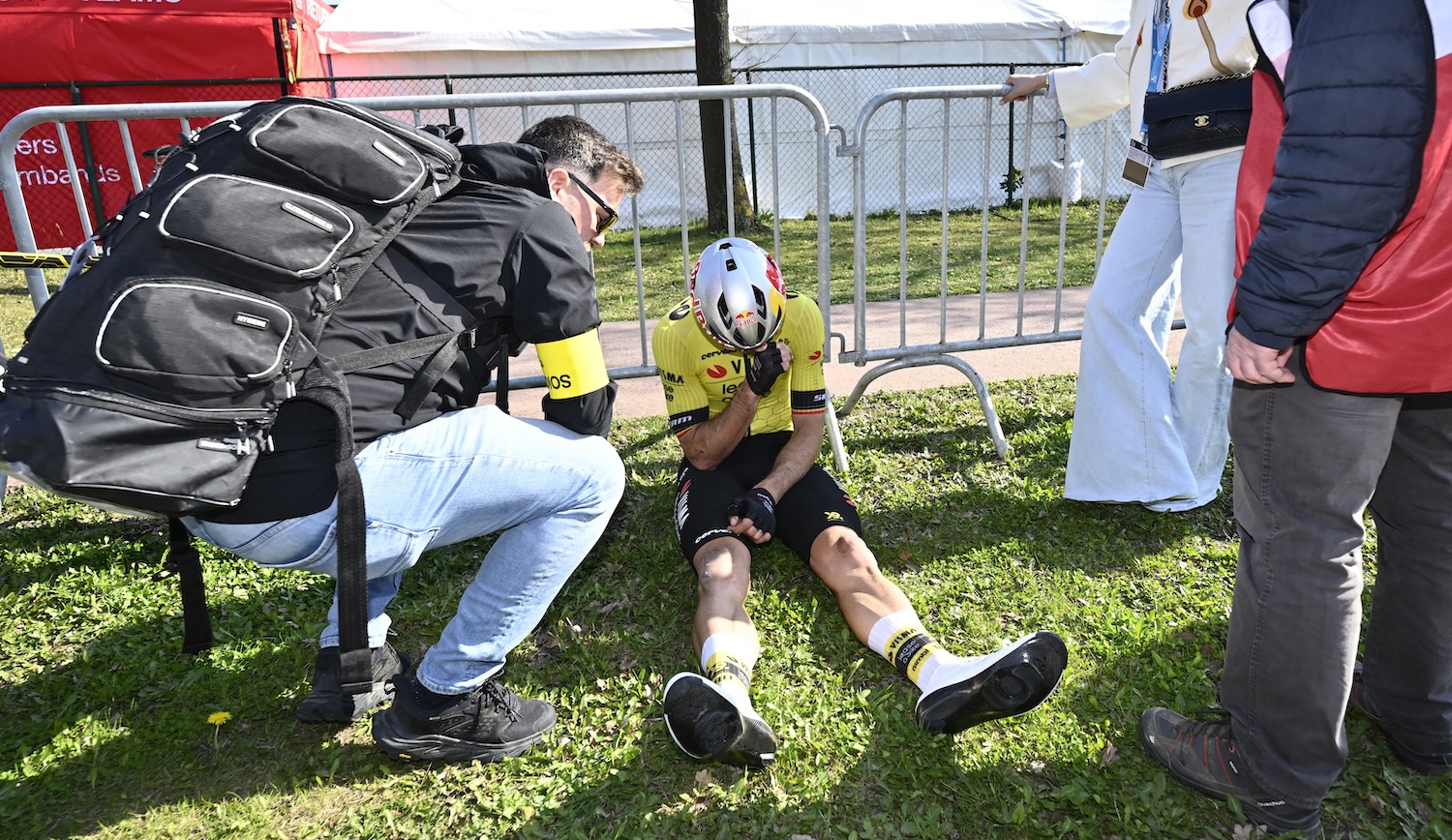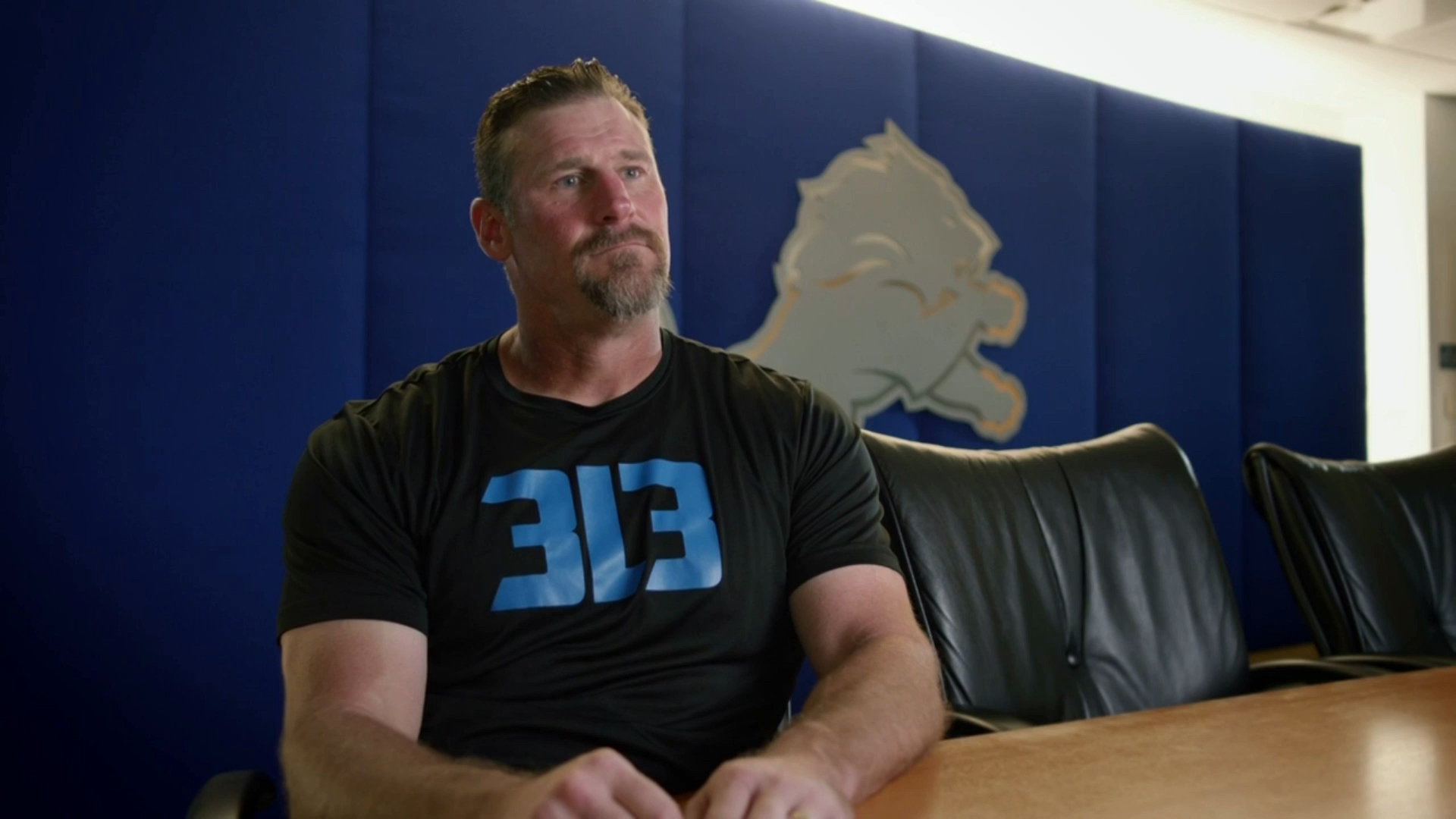MELBOURNE — If you're the type of fan who shouts at NFL referees through your TV screen, Australian rules football will test your absolute limits. The game colloquially called “footy” is played on a horrifyingly large round field, as long as 185 meters from end-to-end. Eight referees, plus two goal umpires, are required to patrol the expansive playing space. Eight refs! And those refs are hilarious, whether they’re animatedly bouncing the funky-shaped ball off the ground to decide possession from midfield, or flinging it backwards over their head to reset the game from out-of-bounds. This latter motion is truly comical—they look just as zealous as an exuberant Gaston Gaudio flinging his racket skyward after winning Roland-Garros. One day someone will throw the ball right out of the stadium.
I went to the Melbourne Cricket Grounds to watch this referee mania in person. Specifically, this was the 266th edition of the rivalry between the Collingwood Magpies and Carlton Blues. (Nadal and Djokovic’s supposedly epic 60-match rivalry looks dinky in comparison.) The MCG was packed to its gills with 85,000 people ready to scream at all eight refs. After a pulsating three hours in which I managed to absorb some of the many quirks of this sadistic game, I still feel as though I understand it less than before.
AFL has elements of other sports, but also several totally unique bits, lest this game resemble anything too normal. The aim of footy is to kick the ball through goalposts, like if the NFL were only about field goals, but the game has none of the maddening stop-start of American football. It’s one long rolling play like in rugby. Each team has 18 people on the field at once to help span the mighty distance from one side of the field to another. Make the ball through the middle two goalposts and you earn six points (called a goal). Make it through the first and second posts on either side and you earn one (called a “behind”). You must bounce the ball to yourself after every 15 meters of running. You may tackle but not high. You may “pass” the ball to teammates but must punch the ball out of your own hands to do so; you can’t just chuck it. Long kicks of 15 meters or more caught before the bounce are called “marks.” Catching one momentarily pauses the game so that you can’t be melted by defenders immediately afterwards. Errant passes are called “clangers.”
This game didn’t have a ton on the line: Collingwood was outside the playoff-making top eight teams by a significant margin, but they could play spoiler to the higher-ranked Carlton, who have been struggling lately. My company was Connor Joyce of The First Serve, who had beaten me twice in tennis that week—once in straight sets and once after I led by a set and a break. He eased my devastation by offering me a ticket to this game.
I’d been to AFL matches before but never really tried to analyze them. The players showed incredible dexterity, often directing perfect passes to their teammates even as an opposing player drags them hard to the ground. But that goofy-ass ball fools everybody when it’s allowed to roam freely. No two bounces are the same. The first quarter was low-scoring; Carlton got off more kicks at the goalposts but wasn’t accurate. They had to settle for slowly accumulating behinds, while Collingwood kicked more sparingly but with better accuracy. It became quickly evident that behinds are all but worthless, at just one-sixth of a goal. AFL is usually high-scoring enough that the margins exceed what can be made up with a few behinds.
Last year, Connor and I attended a game that ended in a draw; it was such a rare occurrence that everybody filed out of the stadium pissed off. Early on, this game was similarly close: Just before the end of the first quarter, Carlton made up for their lack of accuracy by setting up a lovely bouncing kick that found the gap between the middle two posts as if laser-guided, tying the score at 14.
The MCG is where Taylor Swift and Ed Sheeran rack up laughably high crowd numbers during their Australia tours. It’s loud. The crowd was for Collingwood, whose beloved Scott Pendlebury was playing his 400th career game, putting him in an elite club of six. Everyone exploded whenever he touched the ball. They were also titanically pissed at the referees and all opposing players. I heard shouts of everything from “Come on, boys!” to “Punch him in the face!”


Collingwood went on a 16-0 run in the second period. The game lasts for four 20-minute periods of live play, but the only clock displayed in person is the total time elapsed, not the game clock. Connor told me that this is to increase suspense: No one knows how much time is left. (Well, unless you check online, which everybody seemed to be doing.) Collingwood amplified their lead to a seemingly insurmountable 32 points late in the third. I rooted for Carlton, because this is where I lived during my study abroad semester, so I was not a happy camper. Collingwood's players somehow found themselves alone in wide swaths of grass to catch long kicks while Carlton’s men couldn't do anything without getting tackled immediately.
“One more score should put it out of reach,” Connor said. I thought he was pretending the game had more intrigue than it did for my benefit.
But he just knows more about AFL than me: Carlton didn't give up any more goals, then went on a fierce run in the final quarter—a momentum swing conjured just in time to give life to the match. What allowed Carlton to score repeatedly is the ball resetting to halfway after each goal, where the referee initiates that jump ball. Not only is the massive field easier to cover when you slice it in two, but the very beginning of play is the easiest moment to launch an attack. Carlton scored goals, then reset and scored again before Collingwood could find their footing. It can take as little as 30 seconds to move the ball from midfield to pay dirt and suddenly, Collingwood’s lead was down to three points, with a handful of minutes left in the game. Between the irregular bounces of the ball, the chaotic tangle of 36 players on the field, and Connor informing me that elsewhere, the league-leading Sydney Swans were in the process of getting embarrassed (they wound up losing 148-36), I decided that AFL was the most random sport I had ever watched.
As Carlton pulled within one goal, everyone in the crowd lost their mind. The couple to my left supported Collingwood maniacally and acted as if the apocalypse lay on the doorstep. As if responding to their desperation, Collingwood finally tightened their defense, resulting in several minutes of edgy play in which neither team could line up an ideal shot at the goalposts.
With under one minute left, Carlton put together a succession of long passes and Mitch McGovern secured a mark in kicking range. Unbeknownst to on-site fans in the moment, while bringing down the ball, McGovern took a hard knee to the head. He’s also a defender who does not kick goals, so his odds of making this kick—from long range and off-center—were low. But this was the last play of the game, and him making it would seal an incredibly cinematic comeback, so no one rooting for Carlton wanted to think about any of that. We just yelled.
McGovern took his massive run-up and swung his foot through the ball.
The crowd screamed so loudly that for a single magical second, I thought he’d made the kick. I felt a moment of total elation. Then I noticed Connor celebrating, and I remembered he was supporting Collingwood, and I saw the ball had tailed right, way wide of the tall center posts and wide of the shorter side posts as well, not that a last behind would have made a difference. Collingwood won, 84-81.
After the way the final quarter injected so much drama into a previously straightforward game, I couldn’t be upset. Everyone spilled out of the stadium, frantically ingesting nicotine after enduring a couple hours without it, and my chest ached from trying to breathe in the smoke-choked air. AFL remains bizarre to me. Everyone should watch it.
Correction (2:47 p.m. ET): A previous version of this blog stated that a player must bounce the ball after running for 15 steps. The rule is that they must do so after running 15 meters.






